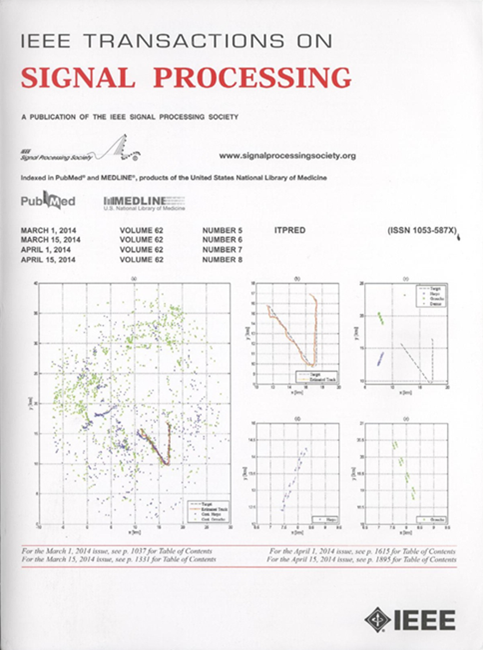基于统一精确传播模型的近场和远场混合源三维定位
IF 4.6
2区 工程技术
Q1 ENGINEERING, ELECTRICAL & ELECTRONIC
引用次数: 0
摘要
在使用麦克风阵列的扬声器定位等应用中,收集的信号通常是远场(FF)和近场(NF)源的混合。为了找到NF源和FF源的位置,本文提出了一种基于统一精确传播几何的三维时空定位算法,避免了分别用FF源和NF源的一阶和二阶Taylor展开来逼近空间相位差。我们的方案利用互相关产生虚拟观测,利用时空信息建立三阶并行因子数据模型。通过三线性分解可以提取阵列的方向向量。利用整个阵元的幅值和相位信息对源类型进行分类,并通过最小二乘法得到源的位置估计。此外,该算法不需要谱搜索、高阶统计量计算或参数配对过程,计算效率高。本文还推导了确定性cram本文章由计算机程序翻译,如有差异,请以英文原文为准。
Three-Dimensional Localization of Mixed Near-Field and Far-Field Sources Based on a Unified Exact Propagation Model
In applications like speaker localization using a microphone array, the collected signals are typically a mixture of far-field (FF) and near-field (NF) sources. To find the positions of both NF and FF sources, a three-dimensional spatial-temporal localization algorithm based on a unified exact propagation geometry is developed in this paper, which avoids approximating the spatial phase difference with the first-order and second-order Taylor expansions applied to FF and NF sources, respectively. Our scheme utilizes cross-correlation to produce virtual observations for establishing a third-order parallel factor data model with the use of spatial and temporal information. The array's steering vectors can be extracted by trilinear decomposition. The amplitude and phase information of the whole array elements is jointly exploited to classify the source types and obtain the location estimates via a least squares method. Moreover, the proposed algorithm is computationally efficient since no spectral searches, high-order statistics calculations or parameter pairing procedures are required. The deterministic Cramér-Rao bound is also derived as a performance benchmark, and numerical results are provided to demonstrate the effectiveness of the developed method.
求助全文
通过发布文献求助,成功后即可免费获取论文全文。
去求助
来源期刊

IEEE Transactions on Signal Processing
工程技术-工程:电子与电气
CiteScore
11.20
自引率
9.30%
发文量
310
审稿时长
3.0 months
期刊介绍:
The IEEE Transactions on Signal Processing covers novel theory, algorithms, performance analyses and applications of techniques for the processing, understanding, learning, retrieval, mining, and extraction of information from signals. The term “signal” includes, among others, audio, video, speech, image, communication, geophysical, sonar, radar, medical and musical signals. Examples of topics of interest include, but are not limited to, information processing and the theory and application of filtering, coding, transmitting, estimating, detecting, analyzing, recognizing, synthesizing, recording, and reproducing signals.
 求助内容:
求助内容: 应助结果提醒方式:
应助结果提醒方式:


